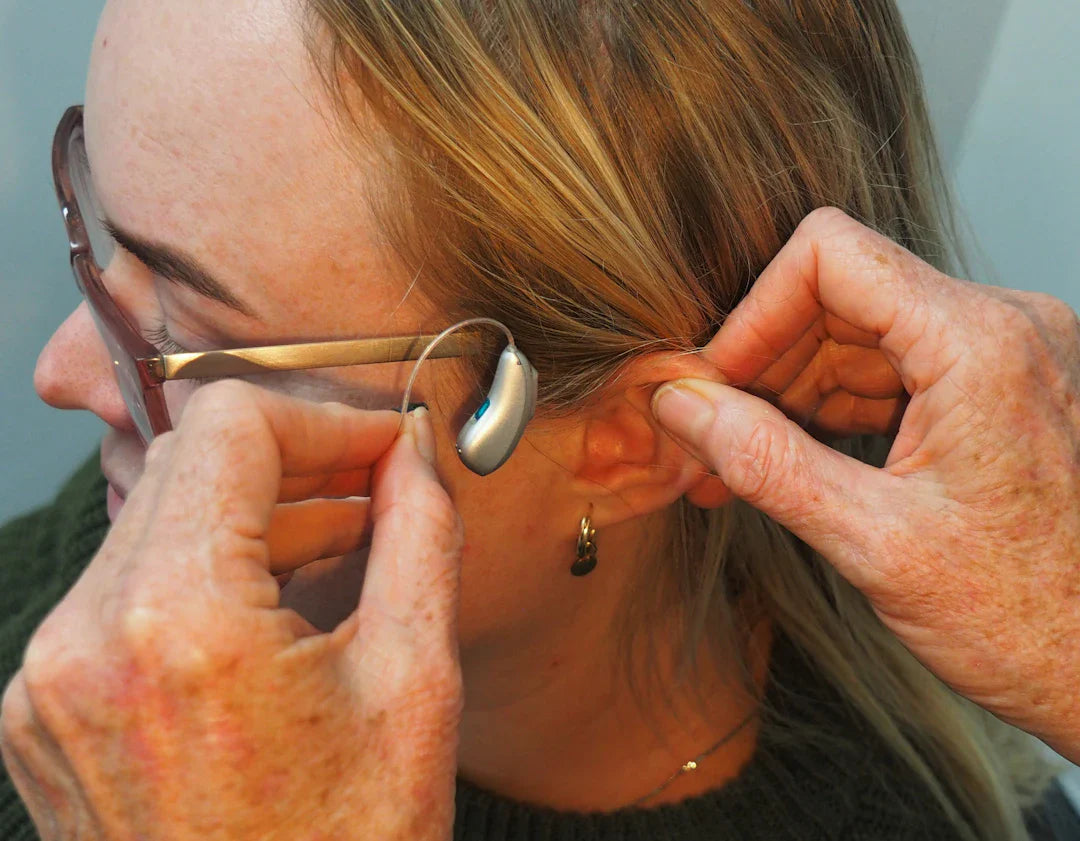Frequently Asked Questions
1. What are the types of hearing loss described in the blog?
2. What are the different styles of hearing aids mentioned?
3. How does sound quality technology enhance hearing aids?
4. Why is comfort and fit important when selecting a hearing aid?
5. What should I consider regarding battery life and maintenance for hearing aids?
With an increasing number of people experiencing hearing loss, the search for the right hearing aid can feel overwhelming. Choosing the best device for your needs is crucial for enhancing your quality of life and communication. In this blog post, we'll explore several key factors to consider when selecting a hearing aid, ensuring you find the perfect match for your unique needs.
Understanding Hearing Loss
Before diving into the specifics of hearing aids, it's essential to recognise the different types of hearing loss. Hearing loss can typically be categorised as:
- Conductive Hearing Loss: Occurs when sound waves cannot effectively pass through the outer ear canal to the eardrum and inner ear.
- Sensorineural Hearing Loss: This type is due to damage to the inner ear or auditory nerve and is often permanent.
- Mixed Hearing Loss: A combination of both conductive and sensorineural hearing loss.
If you suspect you are experiencing hearing loss, it's crucial to consult a healthcare professional for a thorough assessment. Understanding the nature of your hearing loss will play a significant role in determining which hearing aids will suit you best.
Types of Hearing Aids
Hearing aids come in various styles, each tailored to different levels of hearing loss and personal preferences. The main types of hearing aids include:
Behind-the-Ear (BTE)
BTE hearing aids are worn behind the ear and connect to a custom earpiece that fits within the ear canal. They are suitable for all types of hearing loss and can accommodate larger batteries for longer usage. Their durability and ease of handling make them popular among first-time users.
In-the-Ear (ITE)
ITE hearing aids are custom-made to fit the shape of your ear canal. They provide a more discreet option than BTE aids and are easy to handle. However, they may not be suitable for severe hearing loss.
In-the-Canal (ITC)
ITC hearing aids are smaller and fit partially in the ear canal, making them less visible than ITE devices. Their size can limit battery life and features, but they offer a comfortable fit and ease of use.
Completely-in-Canal (CIC)
CIC aids are the smallest type and fit completely inside the ear canal. They are highly discreet and suitable for mild to moderate hearing loss. However, due to their size, they may not feature advanced technology.
Sound Quality and Technology
Modern hearing aids, such as the Signia Styletto hearing aid, come equipped with various technological advancements that enhance sound quality. Here are some features to keep in mind:
- Digital Noise Reduction: This technology helps filter out background noise, making it easier to focus on conversations.
- Directional Microphones: They allow you to focus on sounds coming from a particular direction, improving clarity in noisy environments.
- Connectivity: Many hearing aids can connect to smartphones and other devices via Bluetooth for a more integrated experience.
Consider your lifestyle and how you primarily use your hearing aid when assessing these features. If you often find yourself in crowded places, prioritising sound quality and noise reduction will be essential.
Comfort and Fit
Finding a hearing aid that fits comfortably is vital to ensuring correct usage and effectiveness. Ill-fitting devices can cause discomfort, leading to reduced wear time. When selecting a hearing aid, consider the following:
- Custom Fitting: Opt for hearing aids that are moulded to the shape of your ear for maximum comfort.
- Weight: Lighter models can be more comfortable for extended wear.
Many audiologists offer trial periods for hearing aids, allowing you to test their fit and comfort before making a commitment. Don’t hesitate to make adjustments or swap for a different model if you’re not satisfied.
Battery Life and Maintenance
Battery life can significantly affect your daily experience with your hearing aid. Generally, hearing aids with more features consume more power. When making your choice, think about:
- Rechargeable vs. Disposable Batteries: Rechargeable hearing aids offer the convenience of not needing to replace batteries frequently, while disposable batteries can be more accessible in certain situations.
- Expected Battery Life: Look for models that suit your lifestyle and ask about the expected battery life to avoid frequent interruptions.
Regular maintenance is also crucial. Ensure your hearing aids are cleaned regularly and serviced by a professional to ensure their longevity.
Budget and Insurance Options
When considering a hearing aid, understanding your budget is critical. Prices can vary dramatically based on features, technology, and style. While more advanced options tend to cost more, they may provide enhanced functionality that could justify the expense.
Many health insurance plans may cover some costs associated with hearing aids, so it's worth checking with your provider to see what benefits are available. Additionally, there are often financing options through audiologists that allow for more manageable payments.
Professional Consultation
Consulting with a qualified audiologist is vital when choosing the right hearing aid. They will assess your specific needs and provide personalised recommendations based on your level of hearing loss, lifestyle, and budget.
During your consultation, discuss the following:
- Your specific hearing needs
- Your daily activities and environment
- Previous experiences with hearing aids, if any
Audiologists are also excellent resources for educating you about how to use and maintain your hearing aids effectively.
The Power of User Reviews
With so many options available, hearing aid reviews from other users can offer valuable insights. Look for customer feedback on:
- Performance in various settings
- Comfort during extended wear
- Customer support from manufacturers
Keep in mind that individual experiences can vary, but consistent points raised across multiple reviews can help you determine the reliability of a particular model.
Your Journey to Better Hearing
Embarking on the journey to improve your hearing is a significant step that can enhance your overall well-being. By being informed and considering the various factors discussed in this article, you can make a decision tailored to your needs. Remember, the right hearing aid can lead to better communication, social interaction, and an overall improved quality of life.
Don’t rush your decision—take your time to explore your options. Connect with your audiologist, try different models, and consider all aspects mentioned here. Your ears deserve the best, and with the right hearing aid, you'll be amazed at how much you can continue to enjoy the world around you.




